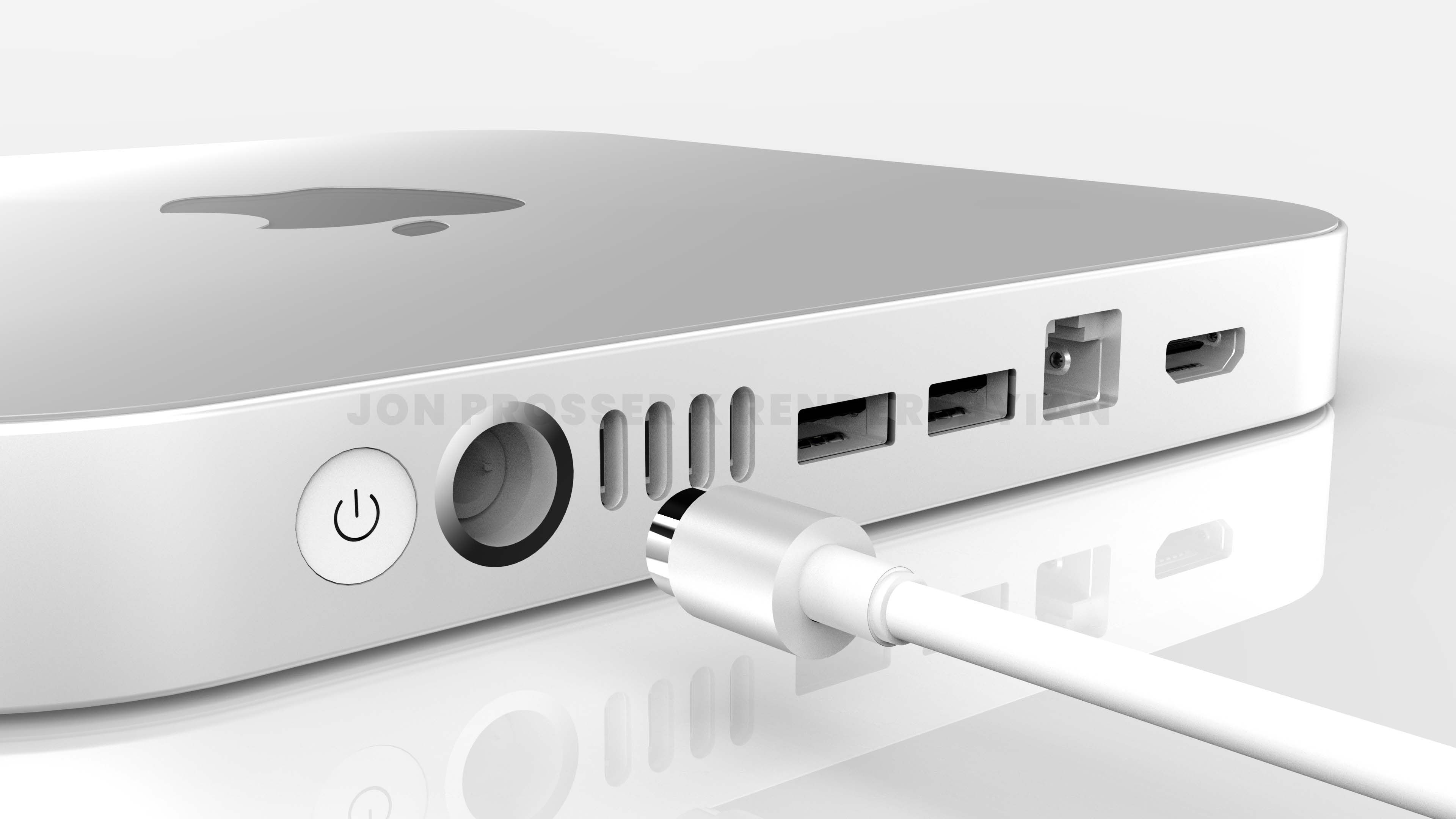Looks fake.
1. There is no ventilation there at all. All the 'holes' are for sockets or bottoms. The presentation of the bottom looks to be missing any inlets. The back has now outlets That makes little sense if the M1X is 2-3x higher thermal output. ( If more than double the number of GPU cores then not going to get a doubling of wattage consumed. Likewise if double up on RAM modules then path lengths go up incrementally over a doubling). Doubling the TBv3 sockets is a doubling of power there. (MBA don't have four sockets) . The 10GbE still generates substantively more power burn off than 1GbE do.
Cooling by air capacity is about how many cubic feet of air you move per second. If there is no input or output then amount moved is probably going to be pretty close to zero. Lowering the thermal capacity is one thing. Dropping it zero is silly. ( Apple has done silly thermal things before so not impossible. )
Completely getting rid of the vents is a bonehead move. The size of the hole doesn't have to change to lower the cooling. Just blow air through the holes at a slower rate will reduce the cooling capacity. That buys less noise which is a good enough "win".
"Apple will just passively radiate everything through the chassis". The problem with that is multiple over several contexts.
a. stacking Mini. ( a super cheap cluster is to just stack 2-3 minis on top of each other. ) . If the top and bottom are radiators then are radiating into one another. In a 3 stack the one in the middle is being radiated to on both sides. You have put it in a sandwich if heat sources. That isn't good.
[ looks like there are some "bumper" feet on the bottom . The stand off distance there doesn't look large enough to be effective for this problem. ]
b. racking them in a data center. How do you get cool air into the MIni's. They have no fan. Would have to add extern fans to blow it in. That is a 'fail'. There will be fans to help "scoop up" hot exhaust , but this runs counter to about everything else in the rack. ( Minis are already a bit of 'odd ducks' in that the suck in air from the side ( racking usually means vertical placements. That isn't "great" but it isn't exactly hostile to the overall cooling flow. ).
[ Never mind there are 10's of thousands Mini racks slots already deployed out there in the current form factor that would need tweaking. ]
c. Very long ( dozens of hours) workloads ( e.g., 24/7 continuous build for multiple projects over different time zones ). This is plugged into a wall so the power draw can be constant and assigned to multiple users.
2. The "design" here seems to be just horizontally slicing off the air vent from the current model .
That appears "clever" right up until the point you notice that it also slices off the headphone jack. That is ridiculous. Even when Apple thinned out the iMac M1 variant they still left the headphone jack. Dumping the headphone jack from a desktop product wouldn't be "brave" . It would be "boneheaded".
3. Somewhat coupled to that is just how is the speakers sound suppose to get out of this enclosure.... or being "brave" and deleting the speaker too? Similarly to cooling you have to actually move air to make noise.
4. As another post mentioned those TBv3 ports are packed too tight. There is Radio frequency bleed and power coming off 40 Gb/s ports.
5. Radio out for multiple antennas where? The top is now "glass" ? ( that won't help much with thermals dissipation). Somewhat goofy placement but Apple places major antenna placment in the bottom.
The future is now! Apple’s once-neglected Mac mini is coming in hot with a brand new, cutting edge, long awaited … processor upgrade? And a couple...

www.ifixit.com
[ step 3. ]
If they "nuke' the inlet mechanism where do the antennas go?
The Mac Mini is already pretty thin. With x86_64 chips, it has run quite noisey because it is pretty thin now. "Even thinner" isn't going to buy much here.



/article-new/2013/09/m1-mac-mini-ports.jpg)
